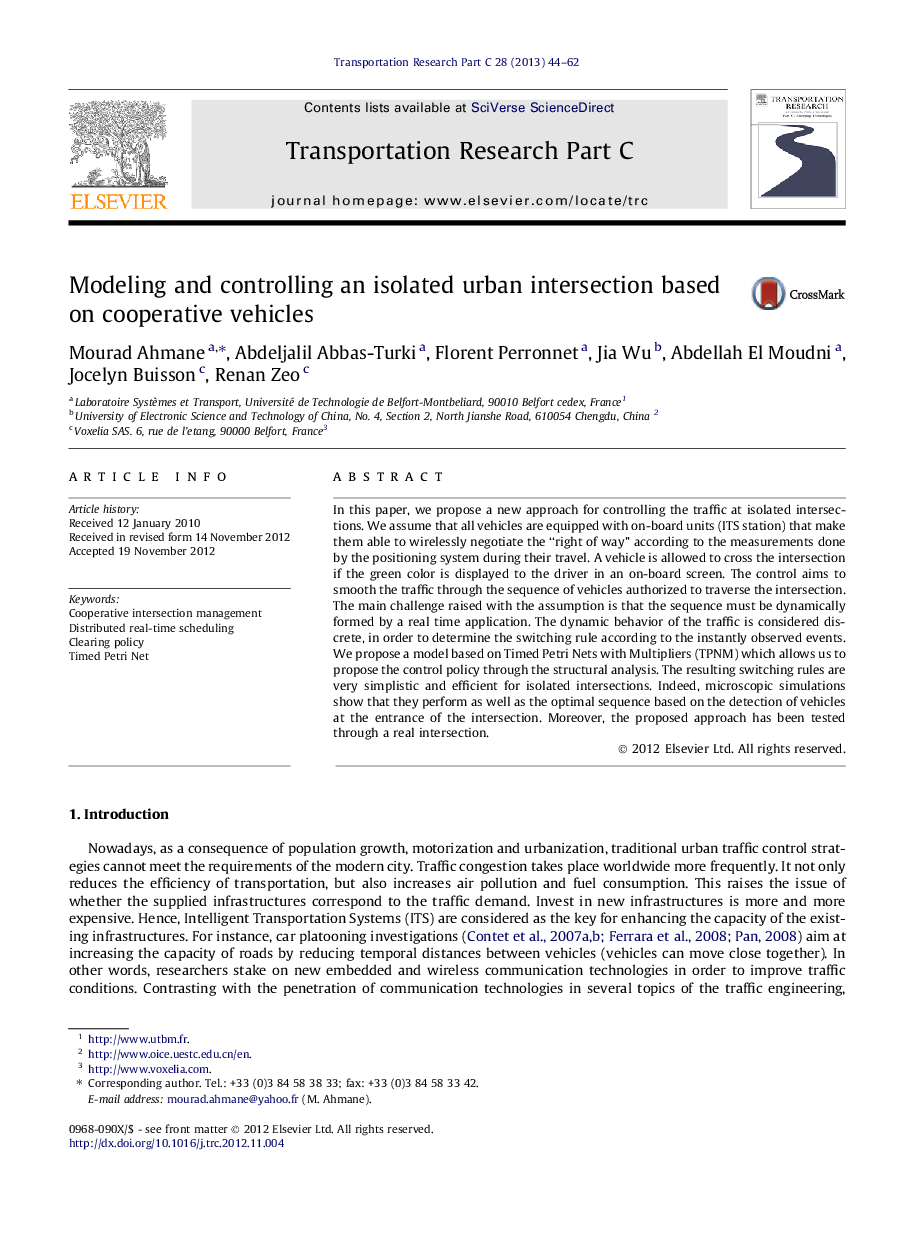| Article ID | Journal | Published Year | Pages | File Type |
|---|---|---|---|---|
| 525172 | Transportation Research Part C: Emerging Technologies | 2013 | 19 Pages |
In this paper, we propose a new approach for controlling the traffic at isolated intersections. We assume that all vehicles are equipped with on-board units (ITS station) that make them able to wirelessly negotiate the “right of way” according to the measurements done by the positioning system during their travel. A vehicle is allowed to cross the intersection if the green color is displayed to the driver in an on-board screen. The control aims to smooth the traffic through the sequence of vehicles authorized to traverse the intersection. The main challenge raised with the assumption is that the sequence must be dynamically formed by a real time application. The dynamic behavior of the traffic is considered discrete, in order to determine the switching rule according to the instantly observed events. We propose a model based on Timed Petri Nets with Multipliers (TPNM) which allows us to propose the control policy through the structural analysis. The resulting switching rules are very simplistic and efficient for isolated intersections. Indeed, microscopic simulations show that they perform as well as the optimal sequence based on the detection of vehicles at the entrance of the intersection. Moreover, the proposed approach has been tested through a real intersection.
► The sequence formation at isolated cooperative intersections is studied. ► An analytical model of the behavior of vehicles at the conflict zone is proposed. ► The instantly measured position of vehicles allows to reduce the queue lengths. ► The proposed approach is successfully tested through a real intersection of vehicles. ► Simulations show that the proposed simple rules perform as well as greedy algorithms.
